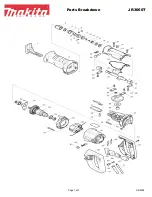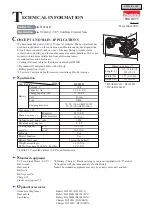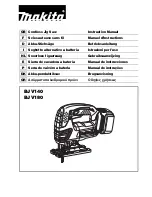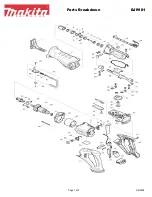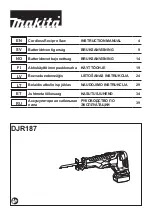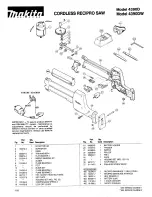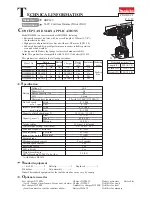
4
English
SAVE THESE INSTRUCTIONS
Charging Procedure
DANGER:
Electrocution hazard is present at charging terminals.
Do not probe with conductive objects. Danger of electric shock or
electrocution.
1. Plug the charger into an appropriate outlet before inserting
battery pack.
2.
Insert the battery pack into the
charger. The red (charging) light will
blink continuously indicating that the
charging process has started.
3.
The completion of charge will be
indicated by the red light remaining ON
continuously. The pack is fully charged
and may be used at this time or left in
the charger.
Charging process
Refer the table below for the state of charge of the battery pack.
State of charge
charging
– – – – – –
fully
charged
–––––––––––
hot/cold pack delay
––– – ––– –
replace battery pack
• • • • • • • • • • •
problem
• • • • • • • •
Automatic refresh
The automatic refresh mode will equalise or balance the individual
cells in the battery pack at its peak capacity. Battery packs should
be refreshed weekly or whenever the pack no longer delivers the
same amount of work.
•
Make sure that cord is located so that it will not be stepped
on, tripped over, or otherwise subjected to damage or
stress.
•
Do not use an extension cord unless it is absolutely
necessary.
Use of improper extension cord could result in risk
of fire, electric shock, or electrocution.
•
An extension cord must have adequate wire size (AWG
or American Wire Gauge) for safety.
The smaller the gauge
number of the wire, the greater the capacity of the cable, that is
16 gauge has more capacity than 18 gauge. When using more
than one extension to make up the total length, be sure each
individual extension contains at least the minimum wire size.
•
Do not place any object on top of charger or place the
charger on a soft surface that might block the ventilation
slots and result in excessive internal heat.
Place the charger
in a position away from any heat source. The charger is ventilated
through slots in the top and the bottom of the housing.
•
Do not operate charger with damaged cord or plug
— have
them replaced immediately.
•
Do not operate charger if it has received a sharp blow, been
dropped, or otherwise damaged in any way.
Take it to an
authorized service center.
•
Do not disassemble charger; take it to an authorized
service center when service or repair is required.
Incorrect
reassembly may result in a risk of electric shock, electrocution
or fire.
•
Disconnect the charger from the outlet before attempting
any cleaning. This will reduce the risk of electric shock.
Removing the battery pack will not reduce this risk.
•
NEVER
attempt to connect 2 chargers together.
•
The charger is designed to operate on standard household
electrical power. Do not attempt to use it on any other
voltage.
This does not apply to the vehicular charger.
Summary of Contents for DC745
Page 35: ...34 Português ...





















